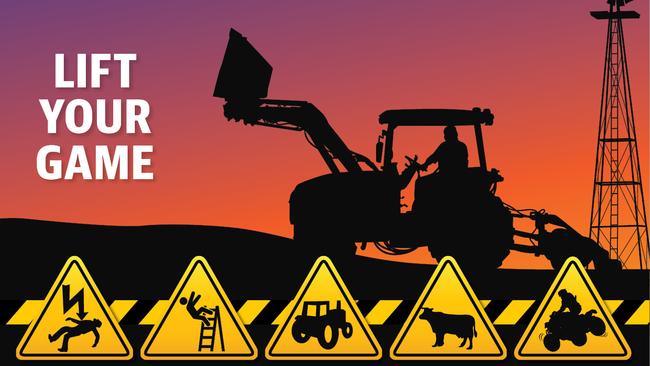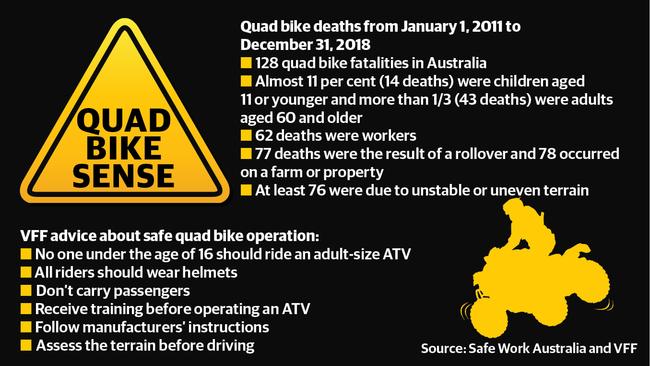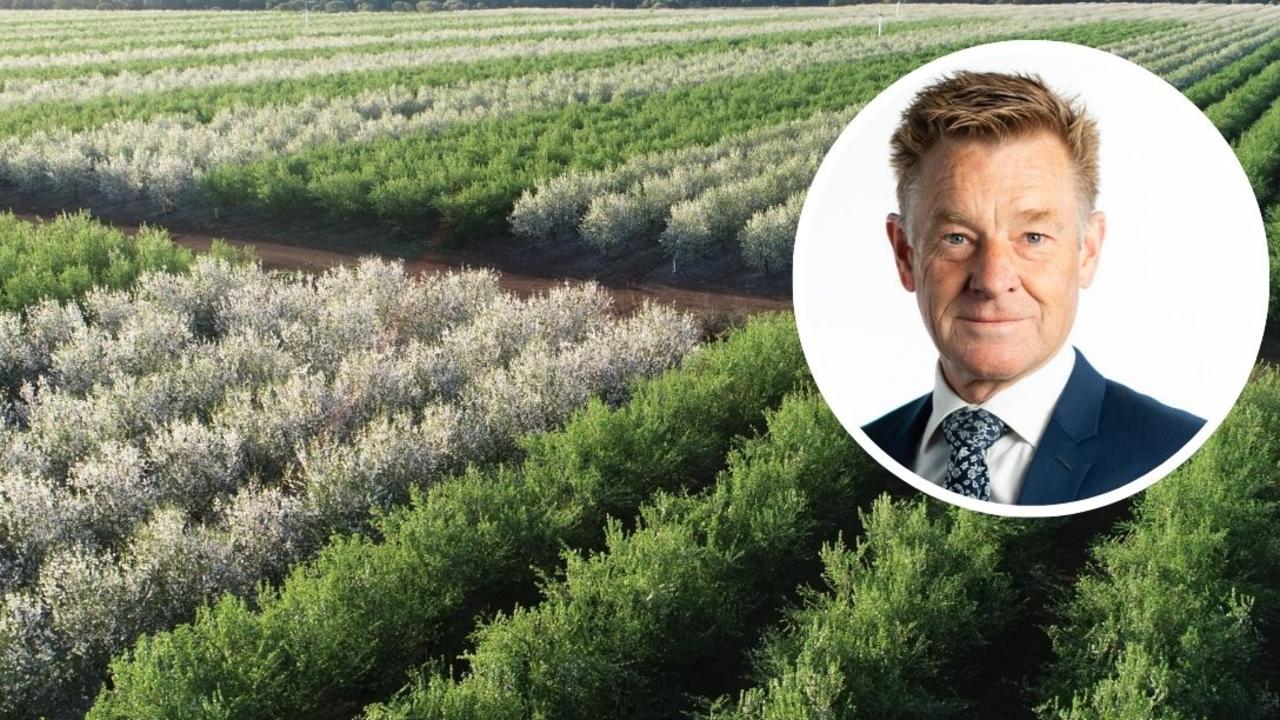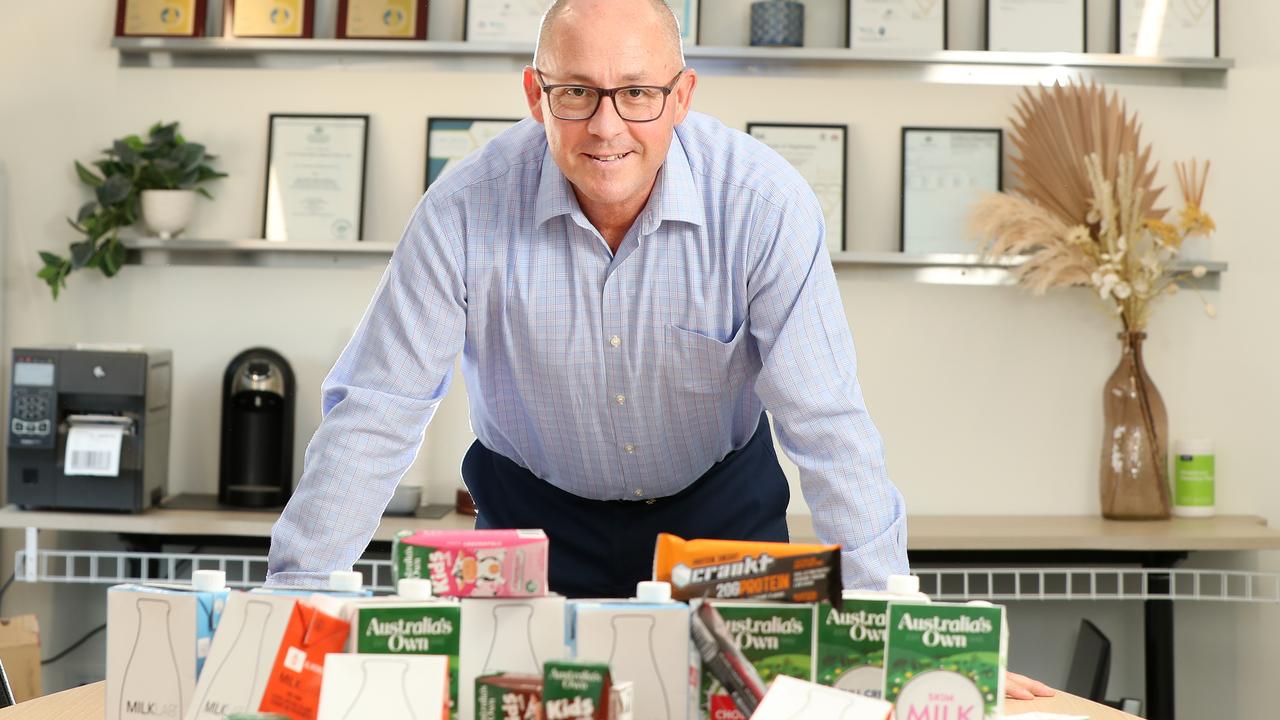Farm safety: Workplace rife with dangers
The ag industry’s top priority is for everyone to come home safe every day — but farms are among the most dangerous workplaces.

FARMS are some of the most dangerous workplaces in Australia.
Official workplace fatality figures from 2017 showed there were 43 deaths in the agriculture, forestry and fishing sector that year, just three fewer than the 46 deaths in the transport and warehousing industry — yet agriculture employs half the number of people.
Eight of the 23 workplace deaths in Victoria last year occurred on farms, with the youngest a 12-year-old who was killed in a tractor accident.
This year, the Victorian figures are little better, with 14 workplace fatalities so far including four deaths on farms.
Among them was a two-year-old child who died in an accident involving a spreader attachment at Naringal on January 2.
Victorian Farmers Federation president David Jochinke said the statistics were unacceptable.
“We can’t accept the numbers we have had in the past,” Mr Jochinke said.
“Everybody in agriculture is important. Safety should be our No. 1 priority,” he said.
The VFF is supporting a campaign by WorkSafe Victoria aimed at improving the statistics.
QUAD CONTROL
Mr Jochinke said mobile machinery, such as tractors, quad bikes and slashers, were particularly dangerous.
Farmers should take safe operation of machinery seriously “to make sure everyone gets home safe”, he said.

Vehicles and mobile machinery were responsible for more than 60 per cent of on-farm deaths and 60 per cent of non-fatal on-farm injuries across the nation last year, with quad bikes involved in six deaths and 26 injuries, according to figures from Aghealth Australia.
No surprise that ATV safety is a firm focus for the WorkSafe campaign, supported by the VFF.
“The centrepiece of that is running the rebates for alternative crush protection devices,” Mr Jochinke said.
“What we are seeing is a lot of children being involved in farm accidents, especially around quad bikes.
“We have to get that message out there about how dangerous those bikes are.”
The State Government pledged $6 million for the scheme in 2016, and grants remain open until September 30 this year.
The rebate offers up to $1200 for the purchase of an alternative vehicle, such as a side-by-side, or up to two operator protection devices for ATVs.
Of the 128 fatalities involving quad bikes in the past eight years, 77 were the result of a rollover and 78 happened on farms.
Mr Jochinke said rollover protection would not prevent rollovers, but could reduce the chances of injury or death if one occurred.
National policy body Safe Work Australia also focuses campaigns on educating quad bike owners and employers about the safety risks of quad bikes and duty of care they have for employees and family members.
Guided by recommendations from coronial inquests, the group suggests rollovers should be managed through crush protection devices, training and wearing protective equipment including helmets.
SAFE MOVES
Tractors and motorbikes are also high-risk machines, with tractors involved in nine deaths and 21 injuries on farms reported in the media last year, while motorbikes were involved in five on-farm deaths and 21 on-farm injuries across Australia.
“Tractors can be extremely dangerous,” Mr Jochinke said, citing the recent death of a man who was hit by a post-hole digger attachment on a farm near Bendigo.
“There are some good practices that you should be maintaining or adhering to — that is making sure that the machine is maintained, the guards are in place, the operator understands how the tractor operates and how to switch it off safely.”
He emphasised the most important thing was for farmers to mitigate risk.
He said business owners should assess workplace behaviours, procedures and maintenance, and make improvements where needed.
Other high-risk activities include working at heights greater than 2m, working in contained spaces such as silos and vats, overhead power lines and working with animals.
“We are seeing loading ramps becoming a huge issue, particularly if you are working with bulls,” Mr Jochinke said.
Finally, he said farmers and workers should be aware of the risks of working alone and in harsh environmental conditions, such as wet, cold, heat and wind.
“None of us are getting any younger,” he said. “It’s making sure we understand our limitations and making sure we work within those limitations.”
The VFF offers phone and on-farm assessments from a farm safety extension officer to help farmers meet Workplace Health and Safety requirements.


